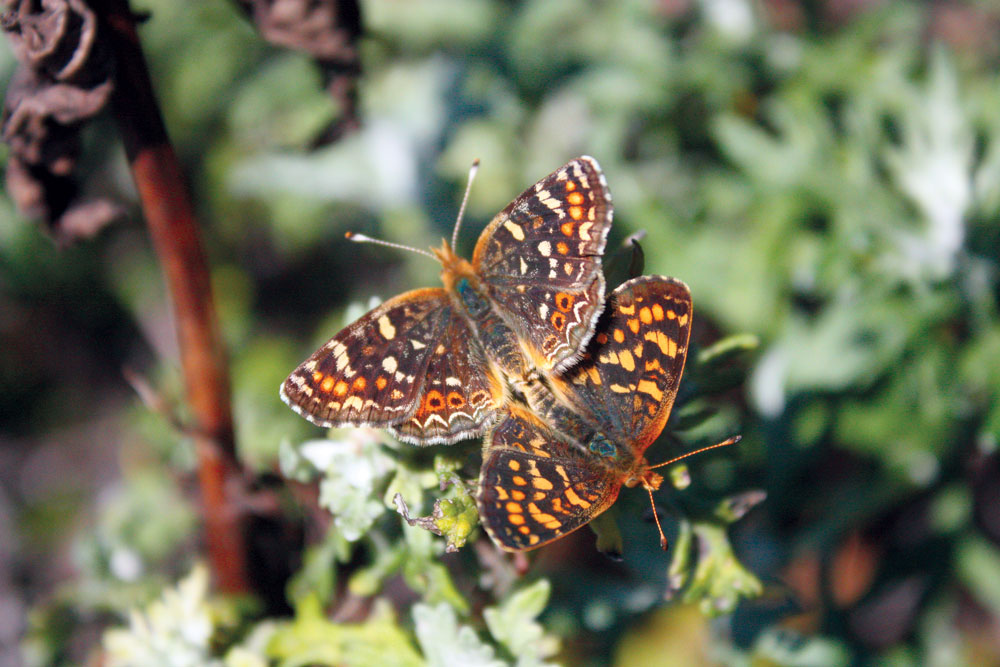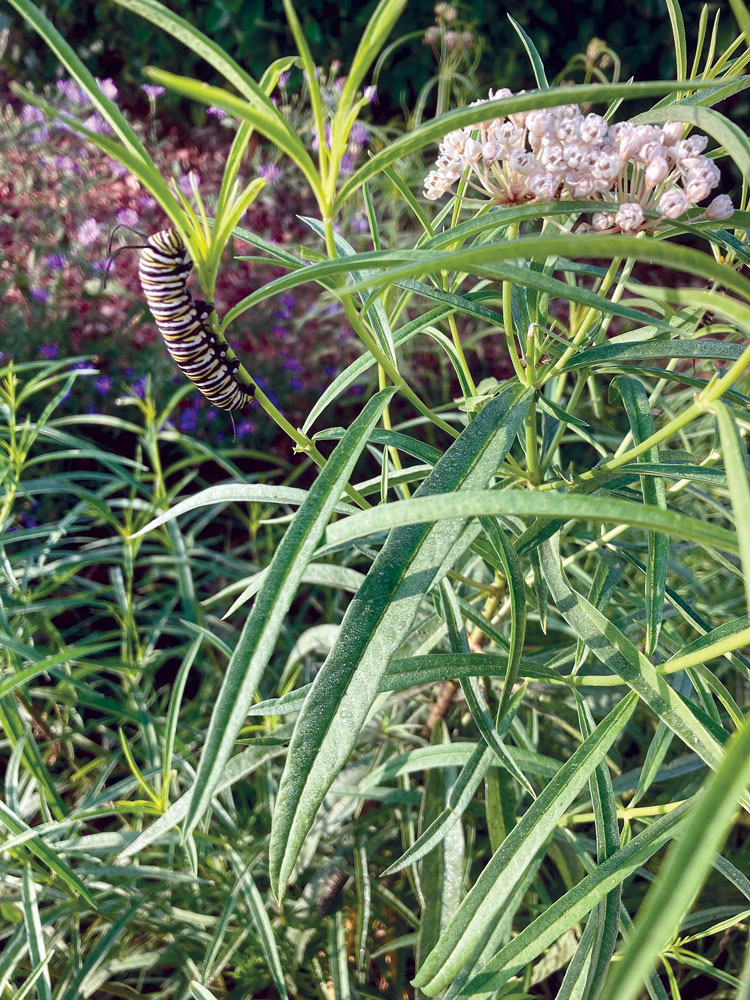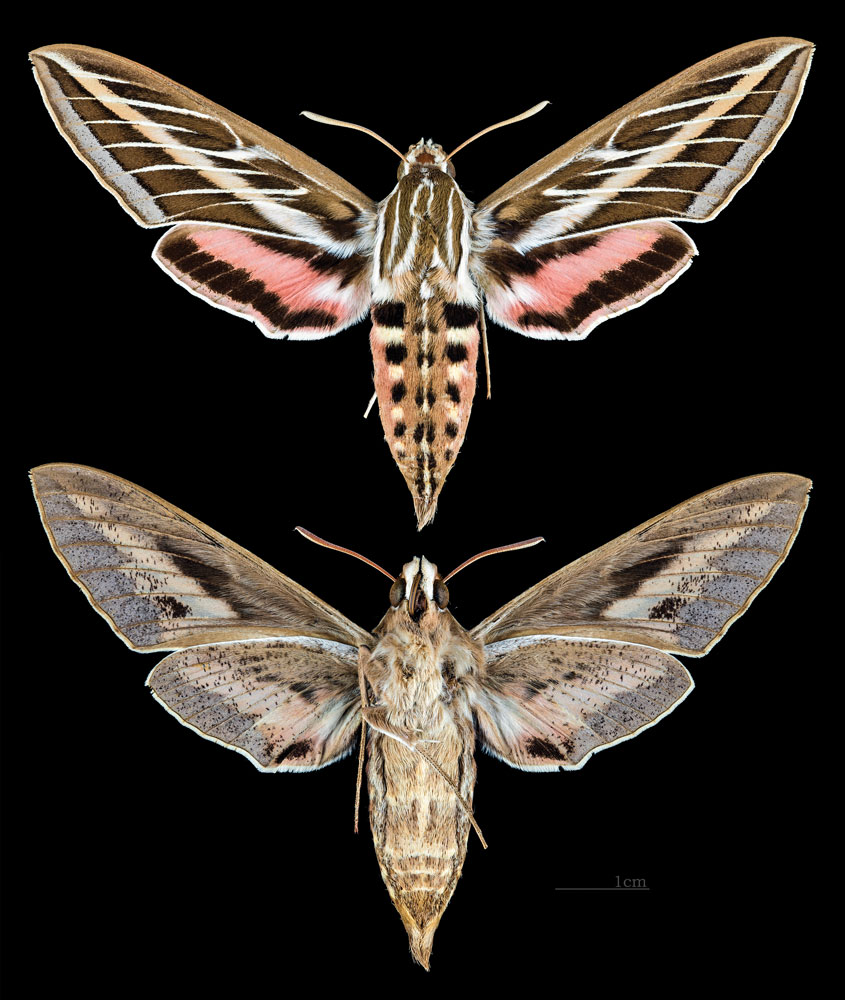Add Butterflies to Your Garden!

Restoring Habitat for Pollinators Benefits Salmon and Other Wildlife
By Audrey Fusco, Restoration Ecologist for the Salmon Protection and Watershed Network
Along with plants, insects form the base of the food web and the bulk of the diet for fish, birds, reptiles, and amphibians. Plants and insects have co-evolved. Native insects require a diverse set of native plants to thrive and generally cannot penetrate the chemical defenses of non-native species of plants. Caterpillars are an important source of food for birds, especially song bird nestlings, and transfer more energy from plants to animals than any other insect. Reclaiming habitat for native plants benefits the many species of butterflies, moths, and native bees that we admire and depend upon while also supporting fish, birds and other wildlife. In return, native pollinators help to create and sustain a biodiverse set of plants, contributing to better habitat for the native insects, which are a source of food for juvenile salmon.

Monarch butterflies are one of the most recognizable species of pollinators in the world, famous for their seasonal migration. Their population has plummeted in recent decades; in 1989 there were 4.5 million Western monarchs, and today the population is around 330,000. The population of the Western monarch has slightly increased in recent years after reaching a low of about 2,000 butterflies in 2020. One of the most important and direct ways that we can benefit monarchs and other pollinators is to improve habitat by providing drifts of milkweed and large patches of nectar plants.
Salmon Protection And Watershed Network (SPAWN) initiated a variety of programs to help with recovery of the Western monarch and other pollinators after the population of this iconic species sharply declined in 2020. While our nursery has always grown a small amount of nectar plants to be incorporated in our stream-restoration projects, in winter 2021 the nursery greatly expanded the quantity of nectar plants and the variety of species grown. In fall 2021/winter 2022, SPAWN planted 1,000 nectar plants at the Roy’s Riffles Restoration project (for more information, see FRN, Spring 2021, treesfoundation.org/2021/04/from-roys-dam-to-roys-riffles) site in San Geronimo; and in fall 2022/winter 2023, 400 native nectar plants were added to our Tocaloma site and an additional 150 nectar plants were added to our Roy’s site. In addition, the SPAWN Restoration Nursery is propagating native milkweed and nectar plants with elementary school students at schools and installing habitat gardens and monarch waystations on school grounds. We have not added milkweed to our riparian restoration sites because these are in an area close to the coast, and no wild populations have been found in the area of our project sites. Milkweed should only be planted in inland areas where monarchs breed during spring and summer months and should not be added to coastal areas near overwintering sites, because the presence of milkweed can cause monarchs to reproduce at the wrong time of year.

Photo by SPAWN
Tips On Planting Milkweed
• Do not plant milkweed within 5 miles of the coast; it may interfere with the reproductive diapause the monarchs are in while overwintering.
• Do plant native milkweeds (Asclepias fascicularis) or (Asclepias speciosa) in inland breeding areas.
• Do not plant tropical milkweed (Asclepias curassavica) in California; it does not go dormant and holds higher levels of the OE parasite than native milkweeds, alters the migration pattern, and can encourage monarchs to reproduce at the wrong time of year.
• Expect California native milkweeds to go dormant in the winter.
• Plant native milkweeds in similar conditions to where they are found in nature, in areas with plenty of groundwater and sun.
• Plant native grasses with your milkweed to provide protection from sun, wind,
and predators.

Photo by Ingrid Taylar, courtesy of Wikimedia Commons
Among many factors that have contributed to the decline of the Western monarch population, including habitat loss, pesticide use, and increased wildfires; one major issue is that milkweed has been largely removed from land over past decades due to development, agriculture, and other alterations in the landscape. Monarch butterflies have four distinct stages in their life cycle in which they go through the process of metamorphosis: egg, caterpillar (larva), pupa (chrysalis), and adult butterfly (imago). During the larval stage there is only one plant, milkweed (Asclepias sp.), that caterpillars are able to eat. Milkweed is an obligate host plant to the monarch butterfly, meaning that this plant is required food for the caterpillar phase of the monarch life cycle.
Monarch butterflies are one of the more prominent examples of what happens to an insect when the essential host plant that supports the larval phase of the insect is removed from the wild. Dozens of other species of butterflies are also threatened or endangered in California, and insect populations are in decline worldwide. Many insects are dependent on their host plants at critical times in the life cycle. Nectar plants are essential for the adult phase of the insect life cycle. Gardeners and restoration practitioners can fulfill the needs of both larval and adult insect life-cycle phases by a planting a diverse set of native nectar-rich plants.

Pollinators Play a Critical Role in Plant Reproduction; Healthy Ecological Systems Contain a Diverse Set of Native Plants
Five plants that are utilized by monarchs for nectar and are native to Marin County and most other coastal counties in Northern California are described in following section. Each of these plants is a host for the larval stage of particular species of butterflies and/or moths in addition to being a source of nectar for monarchs and other pollinators. A brief description is given of each plant along with a list of butterfly species the plant is thought to support as a host plant. All five plant species generally do best with sun and well-draining soil, can grow in sandy, clay, and rocky soils, and require dry summer soils after they are established. Establishment of root systems takes one to two years. The plants grow well together and are naturally found in many plant communities including riparian, mixed forest, oak woodland, coastal scrub, and chaparral.

California Goldenrod (Solidago velutina ssp. californica)
- Bloom color: golden yellow; Bloom time: August to October; Size: 2’–3’H x 2’–3’W
- California goldenrod is adaptable to moderately wet conditions.
- Host plant to: Northern Checkerspot and Field Crescent butterflies and dozens of species of moths including the White-lined Sphinx. Many beneficial insects are attracted to the nectar of the flowers.
California Aster (Symphyotrichum chilense)
- Bloom color: purple and yellow; Bloom time: July to September; Size: 2’–3’H x 2’–3’W
- Flowers are sometimes eaten by deer but the roots generally persist even when the plant has been browsed. Interplanting asters with deer-resistant plants, such as narrow-leaf milkweed or goldenrod, may help to preserve the flowers. California goldenrod and California aster are a powerful combination in small gardens.
- Host plant to: Northern Checkerspot butterfly and White-lined Sphinx moth and many other moths. Many beneficial insects are attracted to the nectar in the flowers.
Hairy Gumplant (Grindelia hirsutula)
- Bloom color: yellow; Bloom time: June to September; Size: 2’–3’H x 2’–3’W
- This plant does well on dry, well-drained slopes and also tolerates poorly drained soils.
- Host plant to the White-lined Sphinx moth. Nectar supports many species of beneficial insects.
California Lilac (Ceanothus thyrsiflorus)
- Bloom color: varies from purple to blue; Bloom time: February to May; Size: 8’–12’H x 8’–12’W
- It is necessary to cage this plant to protect from deer for two years, until the roots are established. This plant appreciates afternoon shade in hot areas.
- Host plant to: Spring Azure, Echo Blue, Pacuvius Duskywing, California Tortoiseshell, Pale Swallowtail, and Hedgerow Hairstreak butterflies, and dozens of species of moths. Insects, especially bees and butterflies, are attracted to the flowers. Nectar supports many insects and is a favorite of California native bumble bees in early spring.
Pink-flowering Currant (Ribes sanguineum var. glutinosum)
- Bloom color: Deep pink; Bloom time: February to April; Size: 6’–8’H x 4’–6’W
- This plant appreciates afternoon shade when growing in hot areas.
- Host plant to: Dozens of species of moths. Butterflies and hummingbirds are especially attracted to the flowers.
Locally-Native* Nectar Plants Fulfill the Following Roles:
• Support pollinators, which helps to create and sustain a biodiverse set of plants.
• Enhance habitat for fish, birds, amphibians, reptiles, and other wildlife through increased food supply.
• Provide for the needs of both larval and adult life-cycle phases of butterflies and other beneficial insects.
• Restore natural functions of ecological systems.
• Require little to no summer water, fertilizer, or other amendments.
* Locally-native indicates native plants derived from nearby eco-regions. For example, milkweeds from the central coast are going to be different than milkweeds from the Sierra foothills.
Additional companion plants for the ones listed in this article include sages (Salvia sp.), yarrow (Achillea millefolium), California sage (Artemisia californica), beeplant (Scrophularia californica), verbena (Verbena lasiostachys), coyote mint (Monardella villosa), California fuchsia (Epilobium canum), mallows like Checker Bloom (Sidalcea malviflora), monkeyflowers (Diplacus sp.), pipevine (Aristolochia californica), Phacelia (Phacelia sp.), penstemons (Penstemon sp.), lupines (Lupinus sp.), coffeeberry (Frangula californica), and coyote brush (Baccharis pilularis). Add native grasses or sedges to provide protection to the butterflies from sun, wind, and predators.
For more information: seaturtles.org/spawn
